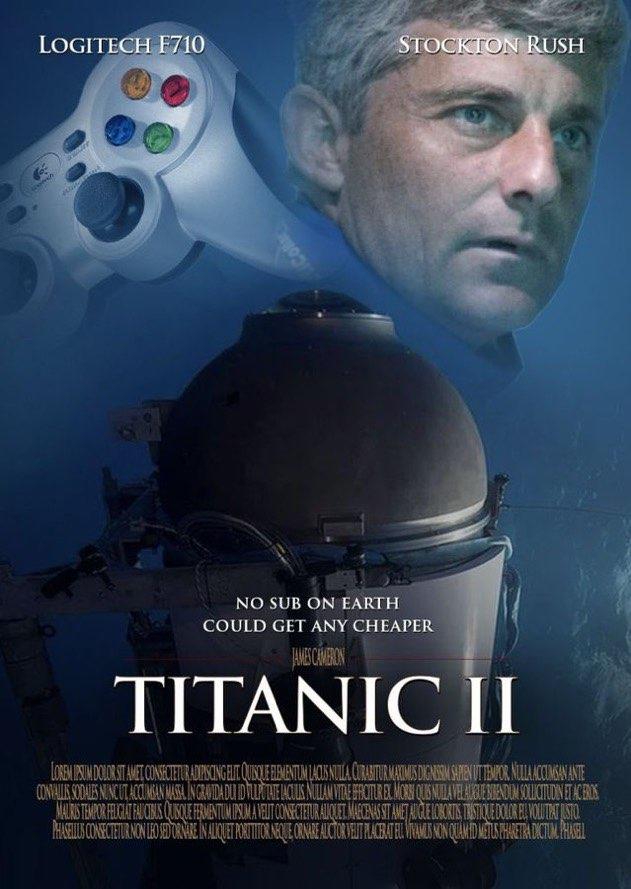Far across the distance
And spaces between us
You have come to show us…
Table of Contents
Titanic Sub Implosion
Honar and Glory or Science and Humor

Ahoy there, dear readers! Today, we embark on a journey to explore the depths of science and humor as we delve into the implosion of the legendary Titanic Sub. Forget about the iceberg; this time, it’s science that has taken a plunge, quite literally!
As we all know, science is a serious business, but who said serious can’t take a holiday? The Titanic Sub implosion is the most recent scientific escapade that had researchers scratching their heads and the rest of us scratching our itch for sarcastic commentary.
Picture this: a colossal submersible that’s supposed to be the pinnacle of maritime engineering, deciding it’s time for a one-of-a-kind underwater implosion spectacular. Move over, Hollywood; science has just taken the lead in creating the next blockbuster event.
The first question that pops into our minds is, why did the Titanic Sub decide to turn itself into a massive, aquatic confetti display? Was it bored with its underwater existence, tired of the fishy neighbors, or perhaps it just wanted to be the star of its own watery catastrophe film?
The Science of the Titanic Sub

Let’s dive into the scientific details, or as we like to call it, the “deep” end of the explanation pool. According to experts, the Titanic Sub succumbed to the irresistible allure of the deep sea pressure. It seems that even the most sophisticated underwater vessels can’t resist the temptation to see what lies beyond the crushing depths.
Ah, the scientific marvel that unfolded when the Titan submarine chose to grace us with its explosive presence! It was a veritable symphony of thermodynamics, kinetics, and structural mechanics colliding in a spectacular display of chaos.
Picture this: as the pressure built within the confines of the submarine’s hull, the laws of Boyle and Charles danced a merry jig, showcasing the elegant interplay between volume, temperature, and pressure. Meanwhile, the combustible cocktail of fuel and oxidizer within the vessel eagerly awaited their moment to shine.
Then, in a crescendo of combustion, the chemical reactions within the submarine’s chambers unleashed a torrent of energy, propelling fragments of metal and debris outward with a force that could rival the fury of a supernova. This sudden release of energy unleashed shockwaves that rippled through the surrounding water, sending seismic signals that reverberated through the ocean depths.
But the drama didn’t end there. Oh no, dear observer! For in the aftermath of the explosion, a cacophony of secondary reactions ensued as the surrounding environment grappled with the sudden influx of heat, light, and gases. Chemical gradients shifted, biological communities were disrupted, and the delicate balance of the underwater ecosystem was momentarily thrown into disarray.
Yes, indeed, the Titan submarine’s untimely demise was a scientific tour de force, reminding us all of the raw power and unpredictable beauty that lurks beneath the waves. Truly, Mother Nature herself could not have choreographed a more compelling spectacle of destruction and discovery.
Scientists were quick to reassure us that this implosion was purely a scientific experiment, not a malfunction. Sure, and the iceberg was just a misunderstood chunk of frozen water on its way to an arctic spa retreat.
One can’t help but wonder if the Titanic Sub’s implosion was its way of making a statement about the hardships of underwater life. Maybe it wanted to send a message to all submarines out there that being submerged 24/7 isn’t all it’s cracked up to be. Or maybe it just needed some decompression time – literally.
Mystery of underwater implosions
As we ponder the mysteries of underwater implosions, it’s essential to appreciate the dedication of the scientists who put their heart and soul into creating the Titanic Sub. Kudos to them for not only engineering a marvel but also for giving us a much-needed dose of humor in these troubled times.
In conclusion, the Titanic Sub implosion teaches us a valuable lesson: even in the darkest depths of the ocean, sometimes a light seems to shine through the darkness.
Back to Hollywood

Kate Winslet and Leonardo DiCaprio would be envious of the theatrical and dramatic appearance of Stockton Rush and his amusing crew. Even James Cameron, who has himself descended into the deepest depths, could not comprehend how someone could voluntarily enter this walking carbon box. So, here’s to science, submarines, and the unexpected joy of witnessing a Titanic-sized underwater explosion. May the next scientific endeavor be equally entertaining, if not as damp!
